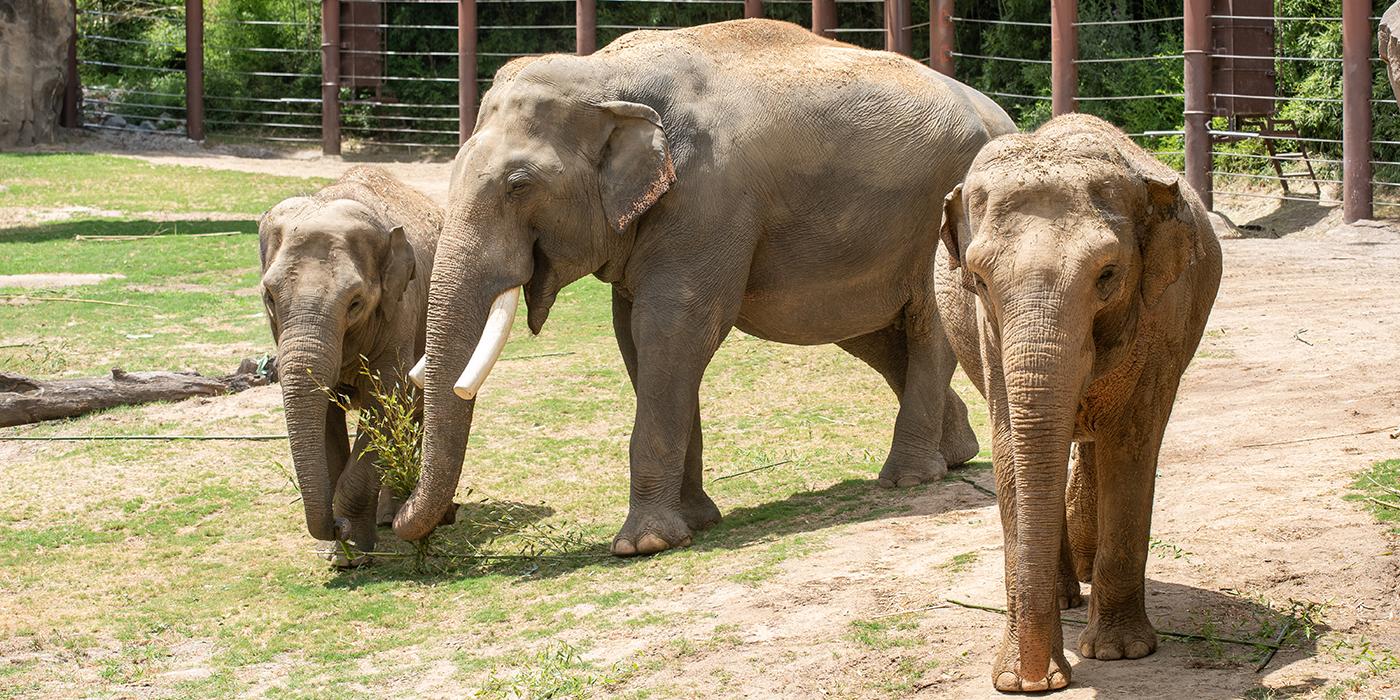Public Debut Of Asian Elephants Kamala, Swarna And Maharani
The National Zoo's three new female Asian elephants—Kamala (39), Swarna (39) and Maharani (23)—made their public debut in one of the outdoor yards on Elephant Trails for the first time Monday, June 23. After arriving at the Zoo May 23, the elephants spent 30 days in quarantine per standard procedure. On loan from the Calgary Zoo in Calgary, Alberta, Canada, they will join the Zoo's herd of four Asian elephants: females Ambika (66), Shanthi (39), Bozie (38) and male Kandula (12). During their quarantine period, the elephants had access to five stalls inside the elephant barn and one off-exhibit outdoor yard. Today, the elephants explored an outdoor portion of their new habitat. Based on behavioral cues, the Zoo staff will gradually introduce the females to the Zoo's original elephants. The Zoo anticipates that the herd will form a social group like those found in the wild. Although the two groups of elephants were not able to physically interact while the females from Calgary Zoo were in quarantine, they have been able to see and hear each other. According to elephant-keeper staff, there has been a lot of communication between the two groups. Elephants "talk" using a low-frequency infrasound.
The Zoo's Elephant Trails exhibit was designed in keeping with the best practices for Asian-elephant management and can accommodate a multigenerational herd. It includes space for socializing, enrichment training and playing. The facility can house eight to 10 adult elephants and their young.
Kamala and Swarna were born around 1975 in Sri Lanka and lived at the Pinnawala Elephant Orphanage until 1976. Maharani, Kamala's second calf, was born in July 1990 at the Calgary Zoo. Records indicate that Kamala, Swarna, Bozie and Shanthi all lived at the Pinnawala Elephant Orphanage in Sri Lanka for a time. There was no way to definitively determine if Kamala and Swarna would recognize Bozie and Shanthi.
The Calgary Zoo announced in April 2012 that it would relocate its elephants based on their long-term welfare needs. The National Zoo was chosen as the new home for the elephants in August 2013. Philanthropist David M. Rubenstein contributed $2 million, enabling the National Zoo to bring the elephants to Washington. The funds covered the costs of elephant transportation, elephant keepers' travel and training, health care and veterinary assessments, facility upgrades and in situ conservation. It was Rubenstein's second major gift to the National Zoo.
The Zoo will continue to provide updates on the elephants on Facebook, Twitter and Instagram and through National Zoo News. Visitors can see Shanthi, Ambika, Bozie and Kandula on exhibit at Elephant Trails. At select times and pending elephant behavior, Kamala, Swarna and Maharani will also be on exhibit at Elephant Trails. The elephant cam will continue to provide opportunities to see the new elephants when they are not on exhibit.
Related Species:



